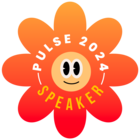Good Afternoon-
I've hit quite a snag. I'm attempting to build my first Relationship-level Power List in Journey Orchestrator/Outreaches and having issues getting anything to populate.
Create Power list for: Relationships --> Products
Derive list of recipients from: Data Space --> Products Relationship Contact --> Email Field --> Contact Email
I started by putting in a criteria of:
Account Name: Equals: CareerArc (our company and my testing account)
Nothing populated, so I deleted the criteria. I then tried:
I tried Contact Role: Equals: Day-To-Day Contact - SR
Nothing populated, so I deleted the criteria. I then tried:
No criteria
Nothing populated.
I checked my DataSpace of "Products Relationship Contact" and found that Contact Name, Account Name, Email Address, Contact Role, etc. were all mapped, however nothing populates.
What is happening? I'm assuming that the data isn't flowing into the DataSpace, however I cannot figure out how to see the data contained in the DataSpace, nor can I find the Objects that the DataSpace is referencing.
Any help would be greatly appreciated. People who have had similar issues. Pointing me in the direction of tutorials that I may have missed (I've been reading what I can find on Community and on GainsightGo to no avail).
Thanks
-Jim
Solved
Relationship-level Power Lists
Best answer by lila_meyer
Hey Jim,
Bionic Rules are the future! ;)
For assistance getting started with bionic rules, check out these resources:
Also, here's a 2-min. video on the basic differences between custom and bionic rules.
Bionic Rules are the future! ;)
For assistance getting started with bionic rules, check out these resources:
Also, here's a 2-min. video on the basic differences between custom and bionic rules.
Sign up
If you ever had a profile with us, there's no need to create another one.
Don't worry if your email address has since changed, or you can't remember your login, just let us know at community@gainsight.com and we'll help you get started from where you left.
Else, please continue with the registration below.
Welcome to the Gainsight Community
Enter your E-mail address. We'll send you an e-mail with instructions to reset your password.

